Published in 2016 by Enslow Publishing, LLC
101 W. 23rd Street, Suite 240, New York, NY 10011
Copyright 2016 by Robert Gardner
All rights reserved.
No part of this book may be reproduced by any means without the written permission of the publisher.
Cataloging-in-Publication Data
Gardner, Robert.
Chemistry experiments in your own observatory / by Robert Gardner.
p. cm. (Design, build, experiment)
Includes bibliographical references and index.
ISBN 978-0-7660-6953-4 (library binding)
1. ChemistryExperimentsJuvenile literature. 2. Science projectsJuvenile literature. I. Gardner, Robert, 1929. II. Title.
QD38.G36 2016
540.78d23
Printed in the United States of America
To Our Readers: We have done our best to make sure all Web site addresses in this book were active and appropriate when we went to press. However, the author and the publisher have no control over and assume no liability for the material available on those Web sites or on any Web sites they may link to. Any comments or suggestions can be sent by e-mail to .
Portions of this book originally appeared in the book Chemistry Projects With a Laboratory You Can Build.
Illustration Credits: Jonathan Moreno; pialhovick/iStock/Thinkstock (graph paper background throughout book).
Photo Credits: Enslow Publishing, LLC
Cover Illustrations: Lisa F. Wang/Shutterstock.com (teen girl doing chemistry); wongwean/Shutterstock.com (science research background).
Contents
Introduction
Science Fairs
The Scientific Method
Chapter 1.Build a Chemistry Lab
Safety First
Build a Balance
Chapter 2.Chemistry and Weighing
 2.1Measuring Mass with Your Balance
2.1Measuring Mass with Your Balance
 2.2Does Freezing Give Water More Mass?
2.2Does Freezing Give Water More Mass?
 2.3Using Density to Identify Liquids
2.3Using Density to Identify Liquids
 2.4Identifying Solids Using Density
2.4Identifying Solids Using Density
2.5How to Weigh a Gas
 2.6Gas Density
2.6Gas Density
Chapter 3.Chemical Reactions and Their Speeds
3.1A Chemical Reaction of Seltzer and Water
3.2Where Does the Gas in a Seltzer Tablet Come From?
3.3Making Chemical Predictions
 3.4Reaction Speed
3.4Reaction Speed
 3.5Catalysts and Reaction Rates
3.5Catalysts and Reaction Rates
3.6Oxidation-Reduction Reactions
3.7Electric Current and Ions
 3.8Oxidation of Iron: Rusting
3.8Oxidation of Iron: Rusting
3.9Testing for Starch
3.10A Forming a Precipitate
Chapter 4.Acids and Bases
4.1Litmus to Identify Acids and Bases
 4.2Acid-Base Indicators
4.2Acid-Base Indicators
 4.3Neutralizing with Acid
4.3Neutralizing with Acid
 4.4Measuring Acidity
4.4Measuring Acidity
4.5Just for Fun: Chemical Magic
Chapter 5.Fun with Chemistry
5.1Dancing Raisins
 5.2Make a Genie in a Bottle
5.2Make a Genie in a Bottle
5.3Air Pressure and a Balloon
5.4Bubble Magic
5.5Vanishing Ink
 5.6Secret Message
5.6Secret Message
 5.7A Jumping Flame
5.7A Jumping Flame
Appendix: Science Supply Companies
Further Reading
Web Sites
Index
Introduction
Chemistry is the science of matter. Matter is anything that occupies space and has weight. Chemists investigate the makeup of matter, its properties, and how different kinds of matter combine. They know what makes things rust, how to remove stains from carpets and clothes, how insulation keeps food cold and homes warm, and much, much more.
Organic chemists study matter that contains carbon. Organic matter is found in plants and animals. Chemists can make many organic substances in the laboratory, too.
Inorganic chemists study all the other substances, such as water, air, metals, salts, acids, and bases. The experiments in this book focus mostly on inorganic chemistry. In order to do these experiments, you will first build a chemistry lab. Much of your laboratory work will take place in your kitchen. There you can find water, heaters, coolers, chemical tools, and many of the chemicals you will need.
At times, you may need a partner to help you. It is best if you work with friends or adults who enjoy experimenting as much as you do. In that way you will both enjoy what you are doing. If any danger is involved in an experiment, you will be warned. In some cases, to avoid danger, you will be asked to work with an adult. Please do so. Dont take any chances that could lead to an injury.
SCIENCE FAIRS
Some of the experiments in this book contain ideas you might use for a science fair. Those projects are indicated with a  symbol. However, judges at science fairs do not reward projects or experiments that are simply copied from a book. For example, a diagram or model of an atom or molecule would not impress most judges; however, a unique method for finding out how the rate of a chemical reaction is affected by temperature or pressure would attract their attention.
symbol. However, judges at science fairs do not reward projects or experiments that are simply copied from a book. For example, a diagram or model of an atom or molecule would not impress most judges; however, a unique method for finding out how the rate of a chemical reaction is affected by temperature or pressure would attract their attention.
Science fair judges tend to reward creative thought and imagination. It is dicult to be creative or imaginative unless you are really interested in your project; therefore, try to choose an investigation that appeals to you. Before you jump into a project, consider, too, your own talents and the cost of the materials you will need.
If you decide to use an experiment or idea found in this book for a science fair, you should find ways to modify or extend it. This should not be dicult because you will discover that new ideas come to mind as you do experiments. You will think of experiments that could make excellent science fair projects, particularly because the ideas are your own and are interesting to you.
If you decide to enter a science fair and have never done so, you should read some of the books listed in the Further Reading section. These books deal specifically with science fairs and provide plenty of helpful hints and useful information that will help you avoid the pitfalls that sometimes plague first-time entrants. You will learn how to prepare appealing reports that include charts and graphs, set up and display your work, present your project, and talk with judges and visitors.
THE SCIENTIFIC METHOD
When you do a science project, especially one with your own original research, you will need to use what is commonly called the scientific method. In many textbooks you will find a section devoted to the subject. The scientific method consists of a series of steps.
Come up with a QUESTION or try to solve a PROBLEM. What are you curious about?
RESEARCH your topic. Find out what is already known. Has anyone already answered your question or solved your problem? What facts are published about your topic?



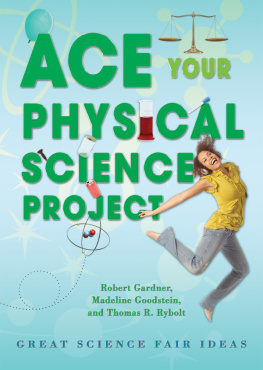

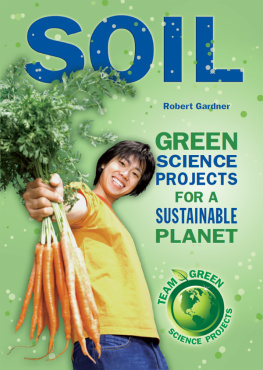
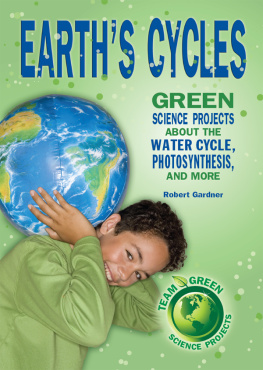
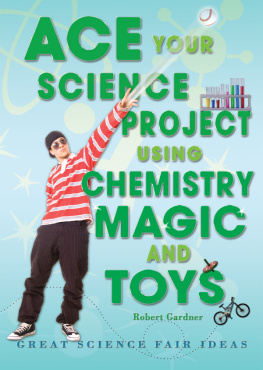
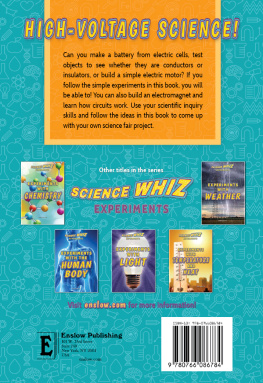
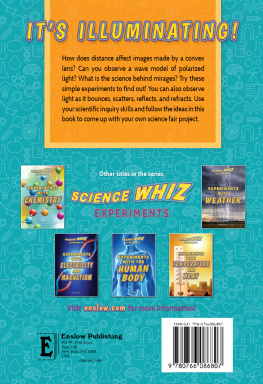
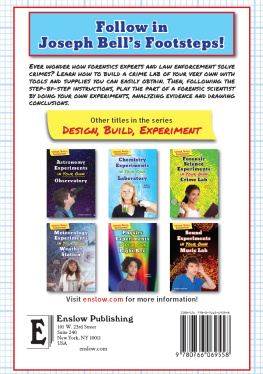
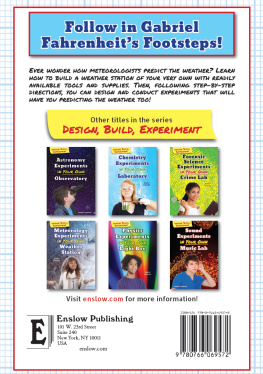
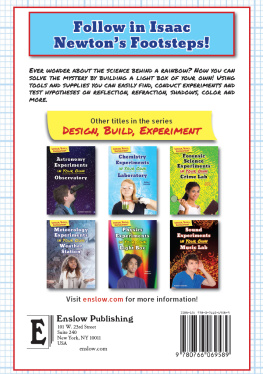
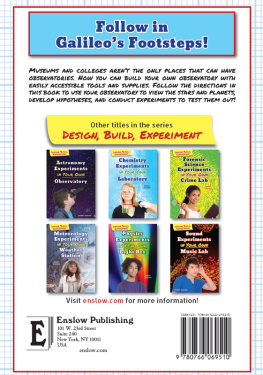

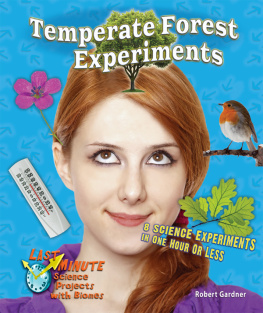

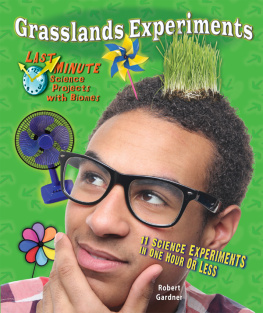



 2.1Measuring Mass with Your Balance
2.1Measuring Mass with Your Balance